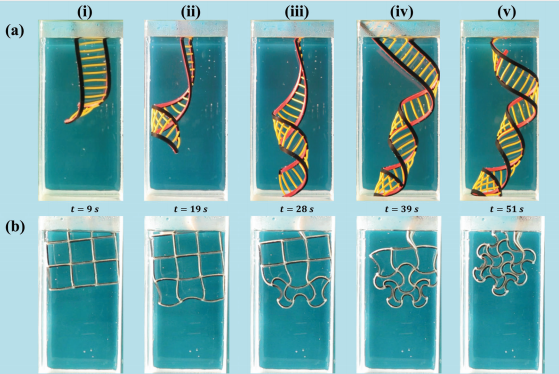
“Ideally, biomaterials should be optimised not only in terms of their 3D structure but also in terms of their surface nano-patterns. 3D printing enables us to create very complex 3D structures, but the access to the surface is very limited during the 3D printing process. Nanolithography techniques enable generation of very complex surface nano-patterns but generally only on flat surfaces. There was no way of combining arbitrarily complex 3D structures with arbitrarily complex surface nano-patterns.”
Recently, however, the TU Delft researchers announced the production of flat surfaces that can, when deployed inside the body, self-fold into the form that is required for their implant. At least, that’s the plan for them; they’re not quite ready for prime time just yet. What’s important in making these origami implants work is twofold: the materials from which the sheet can be fabricated and the ability to teach them how to fold on their own after insertion. Dr. Zadpoor, one of the lead authors of the study, explained the idea behind the devices:
“Nature uses various activation mechanisms to program complex transformations in the shape and functionality of living organisms. Inspired by such natural events, our team developed initially flat (two-dimensional) programmable materials that, when triggered by a stimulus such as temperature, could self-transform their shape into a complex three-dimensional geometry. We used different arrangements of bi- and multi-layers of a shape memory polymer (SMP) and hyperelastic polymers to program four basic modes of shape-shifting including self-rolling, self-twisting (self-helixing), combined self-rolling and self-wrinkling, and wave-like strips.”
While this may sound like the stuff of science fiction, these kinds of programmable materials have actually been a regular part of our environments for the last decade. You may have seen them if you’ve been through the Denver airport, where the shades raise or lower based on the internal temperature. A higher temperature causes the material to loosen, thereby lowering the shades, while a lower temperature causes them to draw up. Using this principle, combined with very specific programming of the planes, the hope is to minimize the invasive nature of procedures and to allow for less expensive, custom implants to be easily created. You can read the full study here. Discuss in the Origami forum at 3DPB.com.
[Source: Engineering.com]
